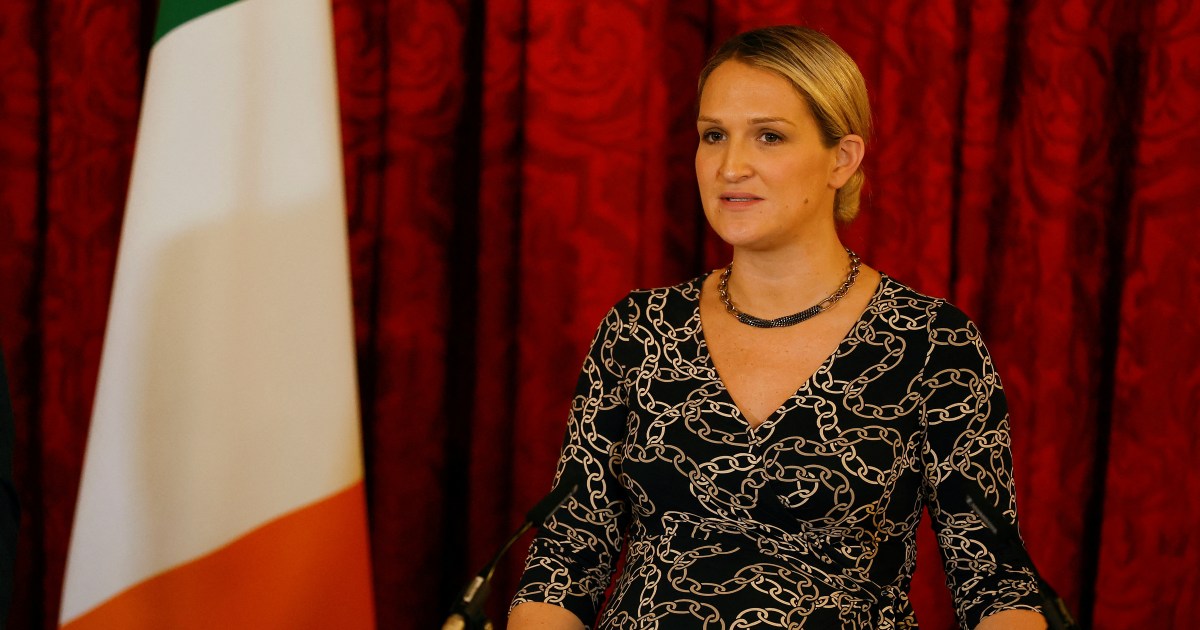Movie Reviews
‘Bob Trevino Likes It’ Review: Barbie Ferreira and John Leguizamo Earn Your Tears in a Touching Dramedy of Connection

The first time Lily (Barbie Ferreira) sits down with a new counselor in Bob Trevino Likes It, we hear only snippets of the backstory she lays out in rambling, rapid-fire detail. Even so, it’s evident it’s a dark one: “Despite what my father says, I’m pretty sure it was not all my fault,” she says of being abandoned by her mother at age four. And it’s made only more heartbreaking by the way she presents it — with the chipper, matter-of-fact cadence of a woman who’s been carrying the pain for so long she’s become totally inured to it.
As Lily wraps up her spiel with a smile, she’s startled to realize the counselor has burst into tears; in the end, Lily has to comfort her about how sad Lily’s own life is. But that counterintuitive mix of tones is Bob Trevino Likes It in a nutshell. Like its heroine, the comedy can be bright and bouncy and frequently funny. But also like her, it’s secretly a tearjerker, and never more effectively than when it’s at its very sweetest.
Bob Trevino Likes It
The Bottom Line Ferreira shines in a deceptively sunny tearjerker.
Venue: SXSW Film Festival (Narrative Feature Competition)
Cast: Barbie Ferreira, John Leguizamo, French Stewart, Lauren “Lolo” Spencer, Rachel Bay Jones
Director-screenwriter: Tracie Laymon
1 hour 42 minutes
Certainly, its heroine has a lot to cry about. In fact, the film’s very first scene sees her sobbing over a flirty text from her boyfriend that was clearly intended for someone else. In a rage, she types out “LOSE MY NUMBER YOU JERK.” Then she erases the message, and instead replies with an upbeat “no prob! :)” It soon becomes apparent that her doormat tendencies are well-honed from a lifetime of dealing with her father (an excellent French Stewart), a narcissist who rarely misses an opportunity to remind her that she ruined his life just by being born — or to play the victim whenever she dares stand up for herself.
But Bob Trevino Likes It is not here to wallow in Lily’s misery. The film draws its emotional power not from watching its characters break, but from letting them start to heal. After a particularly nasty fight with her dad, Lily tries to find him on Facebook and connects instead with a middle-aged contractor who happens to have the same name. In no time at all, Lily comes to regard Bob (John Leguizamo) as a sort of surrogate father figure, and Bob to treat Lily like the daughter he never had. As they grow closer, each helps the other to mend at long last from the blows that have upended their lives.
If there’s a quibble to be had with Bob Trevino Likes It, which is inspired by the experiences of writer-director Tracie Laymon, it’s that the bond between Lily and Bob seems a bit easy. Their jagged edges fit together as neatly as pieces of a puzzle, and Lily’s growth proceeds with few of the stops and starts and backslides that tend to mark even the healthiest evolutions in real life. For his part, Bob is portrayed as a nigh-angelic figure who always seems to know exactly the right thing to do or say to set Lily on the right path. The few other characters who populate the film, including Daphne (Lauren “Lolo” Spencer), Lily’s live-in employer, and Jeanie (Rachel Bay Jones), Bob’s wife, exist solely to nudge Bob and especially Lily along their arcs, rather than to embark on journeys of their own.
And yet it’s hard to argue that Bob Trevino Likes It would necessarily have worked better as a rawer or darker or more sprawling movie. As it is, it succeeds beautifully on its own terms as a love letter, or perhaps a thank you note. Bob and Lily’s connection might be idealized, but Laymon still takes care to ground them in moments that feel authentic, performed by actors who seem incapable of striking a false note. Ferreira is radiant as Lily, who carries herself like a skittish puppy — bursting with so much love she hardly knows how to contain herself, but also terrified to let her guard down lest she get kicked again. Leguizamo tempers her high-key energy with a mellower decency and just a hint of sorrow. Genial as Bob is, a wariness in his demeanor suggests something is missing from his life, even if the shape of that something is not immediately obvious. Together, Leguizamo and Ferreira share a chemistry as warm and lively as the campfire their characters share over one meteor-filled night.
Beyond its perfectly cast leads, the film’s true secret weapon is its disarming sense of modesty. Bob and Lily’s relationship might look, especially at first, like nothing all that thrilling. He likes her posts on Facebook, having noticed that no one else seems to respond to them. She asks about his childhood, and opens up about hers. When her toilet breaks down, Bob drives over to fix it without hesitation. Grand cinematic gestures these are not. But it’s plain from their faces how much it means to be able to give and receive these little acts of care. As they break down each other’s defenses, Bob Trevino Likes It chips away at ours too. By the time I was watching Lily snuggle with a puppy, in a Bob-directed exercise to help her move past a formative childhood trauma, I was crying almost as hard as she was.
In time, Lily, fortified by the sort of sincere, selfless, steady love she never received growing up, is able to process the damage her father has left in his wake. And Bob, having been jolted out of his numbness, is finally able to open up about the painful and difficult feelings he’s kept locked away for so long, first to Lily and then eventually to Jeanie. The Lily we leave at the end of Bob Trevino Likes It is far from perfectly healed, and a bring-on-the-waterworks final scene reminds us that life’s not done dealing her blows just yet. But she is a Lily who, at long last, can bring herself to believe the words Bob impressed upon her in one of their most meaningful conversations: “We’re all a bit broken. But you’re gonna be fine.” For a girl whose story once reduced a therapist to tears, that’s no small feat.

Movie Reviews
BLUELOCK THE MOVIE -EPISODE NAGI- Anime Film Review

BLUELOCK THE MOVIE -EPISODE NAGI- is a retelling of the early events of BLUELOCK through the eyes of Nagi and Mikage. However, that’s not to say this is a recap or compilation film. Rather, a good 70% of the film is newly animated footage as the story follows their first meeting, their growing friendship, and the first few trials of the Blue Lock competition.
It is these additions to the story that are the most interesting. Not only do we get to see a completely different version of the soccer tag game that starts things off, but we also see how Nagi and Mikage deal with the other teams we saw Isagi and his friends confront in the early part of the TV series.
Of course, the real meat of the story is centered around the titular Nagi. We spend most of the film in his head—hearing his internal struggle to understand his opponents and himself. This allows us to see that his growth as a character isn’t the light switch flip it seems to be in the main anime but is instead a gradual process that culminates in his game with Isagi (and the choices he makes after).
Throughout the film, Nagi goes from being perpetually bored to not being bored when he’s with Mikage to caring about soccer after clashing with Isagi. This vastly improves his character by making him far more nuanced and understandable—which is important given how prominent he becomes in the series overall.
Mostly, BLUELOCK THE MOVIE -EPISODE NAGI- works as a standalone film. While knowing the rules of the various challenges within Blue Lock and how Isagi dealt with them adds an extra layer to the story, the focus on Nagi makes the film watchable even without that information.
…And then comes the last 10 minutes of the film.
This film’s climax is when Nagi must choose between Isagi and Mikage. Everything in the film builds to this choice. Thus, the logical conclusion point for the film is right after Nagi makes it. However, instead of doing this, the film becomes a montage cramming 12 episodes of action into 10 minutes. It’s visual chaos. It’s impossible to follow what goes on, and even the key moments with Nagi and Mikage from the series’ back half are almost completely cut. Or, to put it another way, this film would be far better if it were 10 minutes shorter.
As for the presentation, the film looks great—as good as the TV anime in most places and better than it in others. Nagi’s flame and skull motif looks great, and the visuals, in general, show just how invested Nagi is at any given moment in what’s going on. Conversely, the music is largely forgettable, but it does its job well enough.
In the end, BLUELOCK THE MOVIE -EPISODE NAGI- is a great companion piece to the original BLUELOCK and a halfway-decent standalone film. It would be even better if it weren’t for its final minutes (and their unnecessary need to catch us up to the end of the first season of the TV anime). Still, BLUELOCK fans will enjoy this one, even if it stumbles a bit on the landing.
Movie Reviews
Challengers Movie Review

The opinions expressed in this article are the writer’s own and do not reflect the views of Her Campus.
This article is written by a student writer from the Her Campus at San Francisco chapter.
On Monday, April 22nd Regal Stonestown Galleria, just a few hundred feet away from SFSU, hosted an advanced screening of Challengers, one of the most highly anticipated movies of 2024. Directed by Luca Guadagnino and starring Josh O’ Connor, Mike Faist, and Zendaya – Challengers I can confidently say, lived up to its long awaited release.
The original release date for the film was September of 2023, but with the WGA/SAG-AFTRA strike, we got our first trailer in June of 2023 to then have to wait a grueling ten months for its release. I have already seen the film twice and cannot wait for it to hit streaming platforms and here are three things that I will not stop talking about.
Codependency: The Movie
Given the director’s candid remark, “I think those three characters in that movie are beautifully complex and really f*cked-up people that I love very much,” it couldn’t be a more fitting description for Art, Tashi, and Patrick. The audience has been divided by their love, understanding, or attraction to each character. However, after watching it for the second time, I’ve come to realize that these characters are indeed beautifully complex. They are all in pursuit of something they can only find in each other, which undeniably influences their actions. Therefore, when you find yourself torn between Team Art, Team Tashi, or Team Patrick, you might unconsciously be gravitating towards the character whose actions you find most tolerable. After my first viewing, I was 100% Team Art, but even at the time of writing this article I don’t know where my allegiance lies at this point.
Stellar Cinematography
Italian director Luca Guadagnino has solidified his status as a legend in the film industry, known for creating emotionally complex, sultry, and visually captivating works. Challengers, is no exception. As a cinema student, I was fascinated by cinematography. For those familiar with Guadagnino’s 2022 film Bones and All, starring Timothée Chalamet and Taylor Russell, you’ll notice striking similarities. The movie sports camera angles that bring you intimately close to the characters, almost as if you’re intruding on their personal space. There are intense shots that seem to place the camera on the tennis ball as it zips back and forth across the court. True to Guadagnino’s style, there are also moments where time seems to slow down amidst what would otherwise be fast-paced scenes.
Sexual Tension
This. Movie. Is. Sexy.
For a film that has absolutely zero sex scenes, there are moments in this film that will leave you feeling flushed and excited. As someone who’s never been a big sports fan, I now see tennis as the most intimate sport out there. I will keep this paragraph short but all I will say is that viewers will walk away from this film with a new love for short shorts, sweat, and they’ll never look at a churro the same way again.
Movie Reviews
High & Low – John Galliano Movie Review: A fascinating study of a fashion designer's fall from grace

The premise of Kevin Macdonald’s High & Low – John Galliano lends itself well to the documentary format, given that it charts the zenith and nadir of the career of a famous fashion designer. The highs are insane, and the lows plummet to profound depths. The first half of the film captures John Galliano’s rise from the boutiques of London to the haute couture scene in France. Two-three passages in the first half stand out, thanks to the nuggets of information Kevin presents. One is about how Galliano was inspired by Abel Gance’s silent film Napoléon to create an extravagant clothing style among the elite. During the French revolution, youngsters apparently resisted the trend of clothes without extravagant styling, and this film shows how Galliano channels this through his fashion, with the repeated use of Napoléon drumming in his influence on the fashion designer’s work.
Director: Kevin MacDonald
Cast: John Galliano, Charlize Theron, Penélope Cruz, Edward Enninful, Naomi Campbell
Streamer: Mubi
The other, more fascinating portion of the film’s first half is so typical of the Kevin Macdonald brand of storytelling. First, through a mix of voiceover and fashion footage, Kevin shows Galliano’s response to the abuse he faced in childhood for homosexual tendencies, and the resultant trauma. There is a portion about his father beating him for calling a young man “gorgeous.” Kevin juxtaposes this with a moment where Galliano, now a successful fashion designer, clad in a pink T-shirt that says “gorgeous,” walks the ramp with a couple of women. It is particularly provocative for the blink-and-you-miss-it way in which Kevin presents it, much like how he addresses Idi Amin’s meat-eater reputation in The Last King of Scotland. By this time, the film leaves you engrossed in its world-building, full of dramatic lighting that highlights the models and their garments, the clicking sound of cameras, and the energetic background music. For a good part, watching the film is like being on the front row of a fashion show, thanks mainly to the use of archive footage.
-

 Kentucky1 week ago
Kentucky1 week agoKentucky first lady visits Fort Knox schools in honor of Month of the Military Child
-

 World1 week ago
World1 week agoShipping firms plead for UN help amid escalating Middle East conflict
-

 Politics1 week ago
Politics1 week agoIsrael hits Iran with 'limited' strikes despite White House opposition
-

 Politics1 week ago
Politics1 week agoICE chief says this foreign adversary isn’t taking back its illegal immigrants
-

 News1 week ago
News1 week agoThe San Francisco Zoo will receive a pair of pandas from China
-

 Politics1 week ago
Politics1 week ago'Nothing more backwards' than US funding Ukraine border security but not our own, conservatives say
-

 News1 week ago
News1 week agoIs this fictitious civil war closer to reality than we think? : Consider This from NPR
-

 World1 week ago
World1 week agoTwo Mexican mayoral contenders found dead on same day







:quality(70)/cloudfront-us-east-1.images.arcpublishing.com/adn/LCCPJNUKDFGM3PV4BQBVOMTXTM.jpg)











